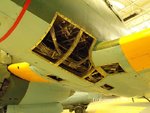leadnbrass
Recruit
- 3
- Aug 1, 2014
Picked up a few items today from an elderly woman...husband who died years ago was a WWII pilot. She gave me a couple items that appear to be aircraft related and I was able to figure out what the American pieces are. These two have me stumped mainly due to the fact that they appear to be Japanese and I know nothing about aircraft.
Anyone care to help me with translation of ID...many hours of searching the computer keeps leading me here.
Thanks for all the help.






Anyone care to help me with translation of ID...many hours of searching the computer keeps leading me here.
Thanks for all the help.

